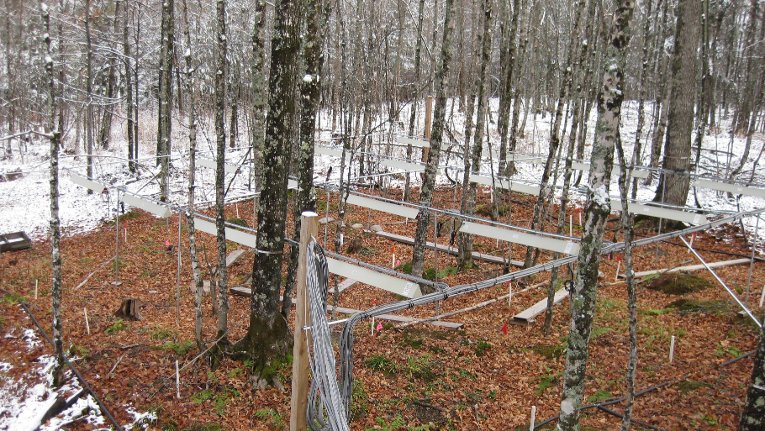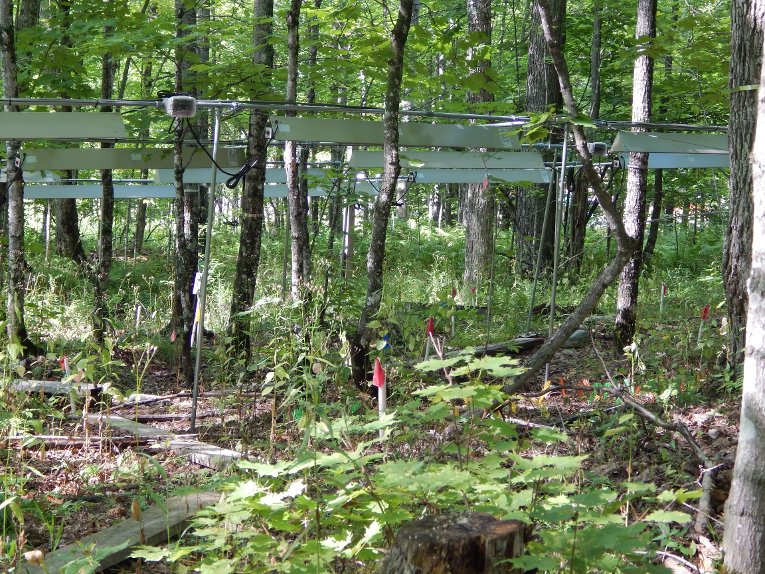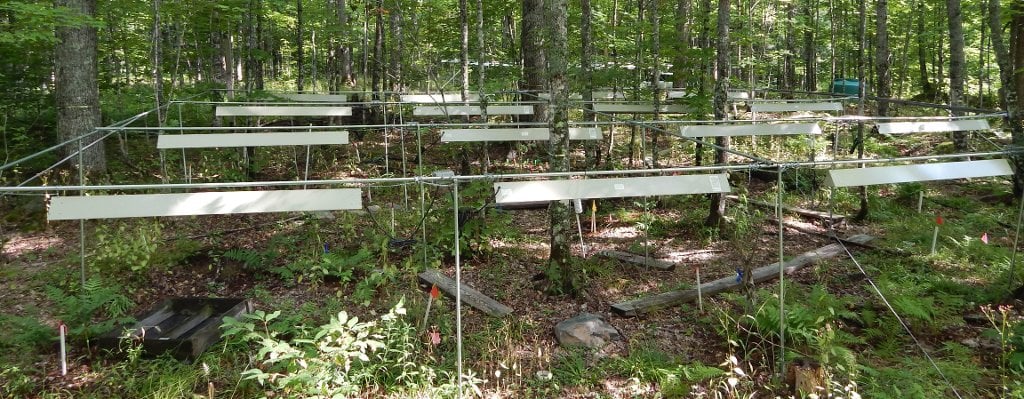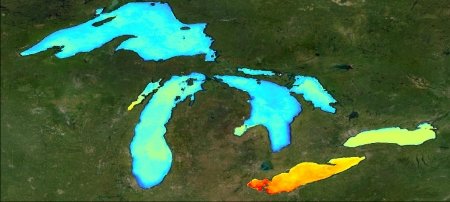Following a warming experiment called SMART, our ecologists contributed to two major meta-analyses on the impact of a warming climate on soil carbon storage and release.
Kids coloring books are misleading; connecting the dots is not a matter of dozens of points, but rather hundreds of thousands of points. To connect the dots of soil carbon responses to warming, ecologists brought their data together from Michigan Technological University and many other universities, led by Yale and the Marine Biological Laboratory.
The work has been published in two papers: one published several weeks ago in the Proceedings of the National Academy of Sciences and another published today in Nature. The main findings from both studies show that as the climate changes, so will soil carbon storage, with increased soil respiration contributing significantly to carbon dioxide emissions. Andrew Burton, a professor of forest ecology at Michigan Tech, contributed data from an Upper Peninsula site.
"These two studies show the big picture that many smaller studies have observed but had not been able to provide consensus on," Burton says. "There are big benefits to bringing so many minds together—we're finally able to see larger patterns."
Soil Carbon Loss and Respiration
Soils, in a way, breathe and emit carbon dioxide through soil respiration; they also store carbon as organic matter. Currently, the Earth’s soil is releasing roughly nine times more carbon dioxide to the atmosphere than all human activities combined. However, researchers did not fully understand how respiration or carbon storage would change with global warming.

To find out, Marine Biological Laboratory scientists and Yale scientists brought together two teams to synthesize the data from dozens of studies across nine biomes, from the desert to the Arctic. This represents the world’s largest dataset to date of soil responses to experimental warming.
The soil respiration study, published in PNAS, finds that soil warming shows increased respiration rates up to 25° C (77° F); above that threshold, the rates decrease. Additionally, the team observed no microbial adaptation to warming, except in the desert and boreal forest, suggesting that most soils will respond strongly to warming, with increased release of carbon dioxide to the atmosphere.
As a result, soil carbon storage on a global scale is predicted to decrease, as confirmed in the Nature study. Warming will drive the loss of trillions of kilograms of carbon from the soil. A conservative estimate by the researchers suggests that this value will exceed 55 trillion kg by 2050, or up to 17% on top of expected anthropogenic carbon dioxide emissions.
In both cases, higher latitudes with frozen soils and currently low microbial activity will contribute more to the increase in soil carbon emissions. These same areas are at risk for greater warming as well.
SMART Warming Experiment
Burton from Michigan Tech contributed data from a temperate forest soil warming study. The Alberta, Michigan, site at the Ford Center and Forest in the Upper Peninsula is called SMART, for Sugar Maple Altered Rainfall and Temperature. It operated from 2010 to 2014 with funding from the US Department of Energy and the USDA Forest Service.
Erik Lilleskov, research ecologist for the USDA Forest Service and adjunct professor at Michigan Tech, and Molly Cavaleri, associate professor at Michigan Tech’s School of Forest Resources and Environmental Science, also participated in the SMART experiment.

Burton's team raised the soil temperature 4 to 5° C and observed soil carbon losses and respiration that agreed well with the meta-analyses. They did see a spike in initial decomposition while soil respiration increased, but this response lessened over time as available soil carbon declined. They also conducted experiments controlling rainfall and observed drier plots had less of an increase in soil respiration with warming.
The sugar maple forest type is common across the Eastern and upper Midwestern states; the changes observed here may well be the same in many people's backyards.
In addition to soil respiration and carbon storage, there are several other biological feedbacks – like the accelerated plant growth under elevated carbon dioxide – which could dampen or enhance the effect of this soil carbon feedback to rising atmospheric carbon dioxide and climate change. Additionally, more data is needed from Arctic and tropical sites. But understanding these processes at a global scale is critical for our understanding of climate change.
Michigan Technological University is an R1 public research university founded in 1885 in Houghton, and is home to nearly 7,500 students from more than 60 countries around the world. Consistently ranked among the best universities in the country for return on investment, Michigan's flagship technological university offers more than 185 undergraduate and graduate degree programs in science and technology, engineering, computing, forestry, business, health professions, humanities, mathematics, social sciences, and the arts. The rural campus is situated just miles from Lake Superior in Michigan's Upper Peninsula, offering year-round opportunities for outdoor adventure.






Comments